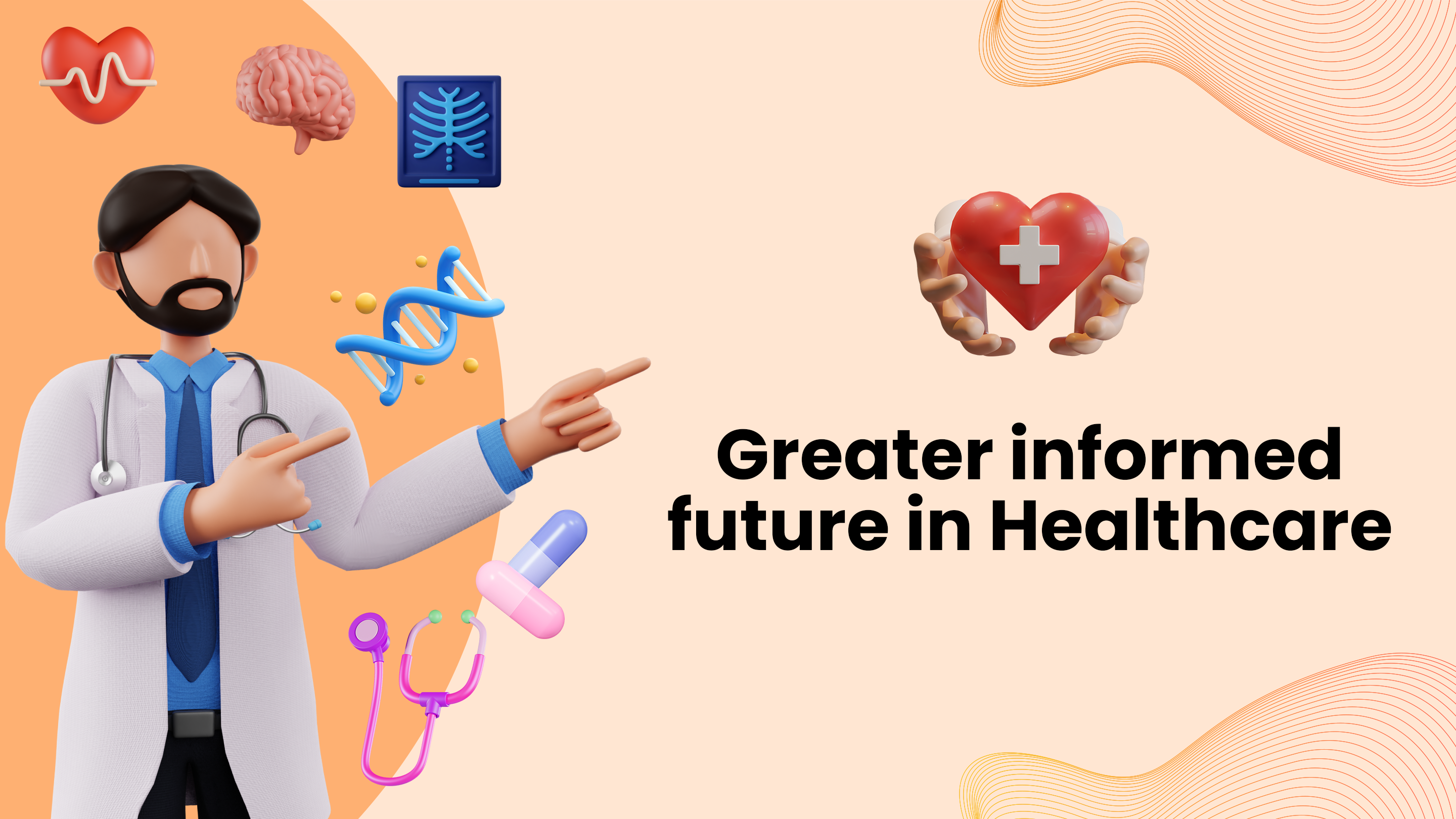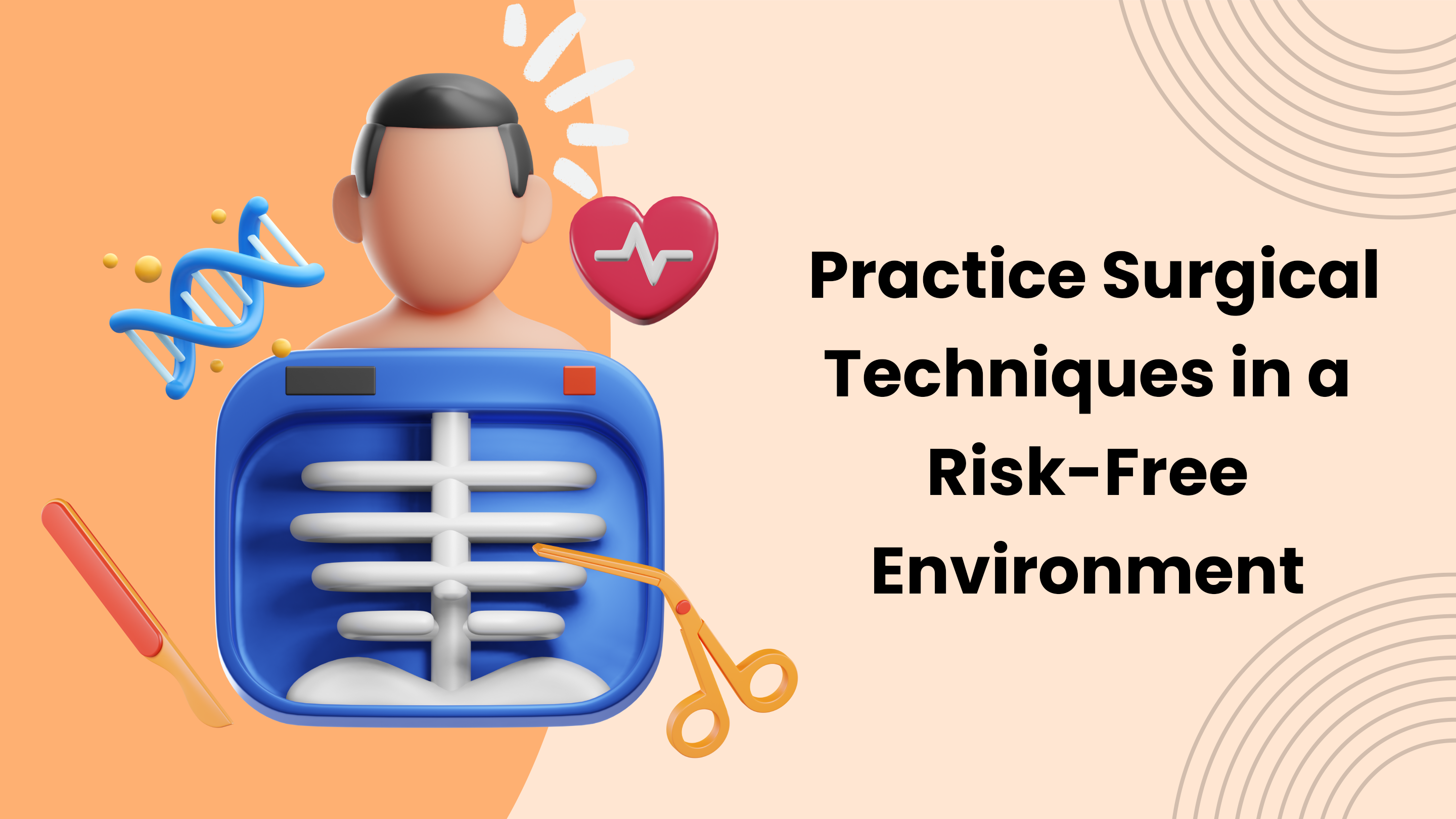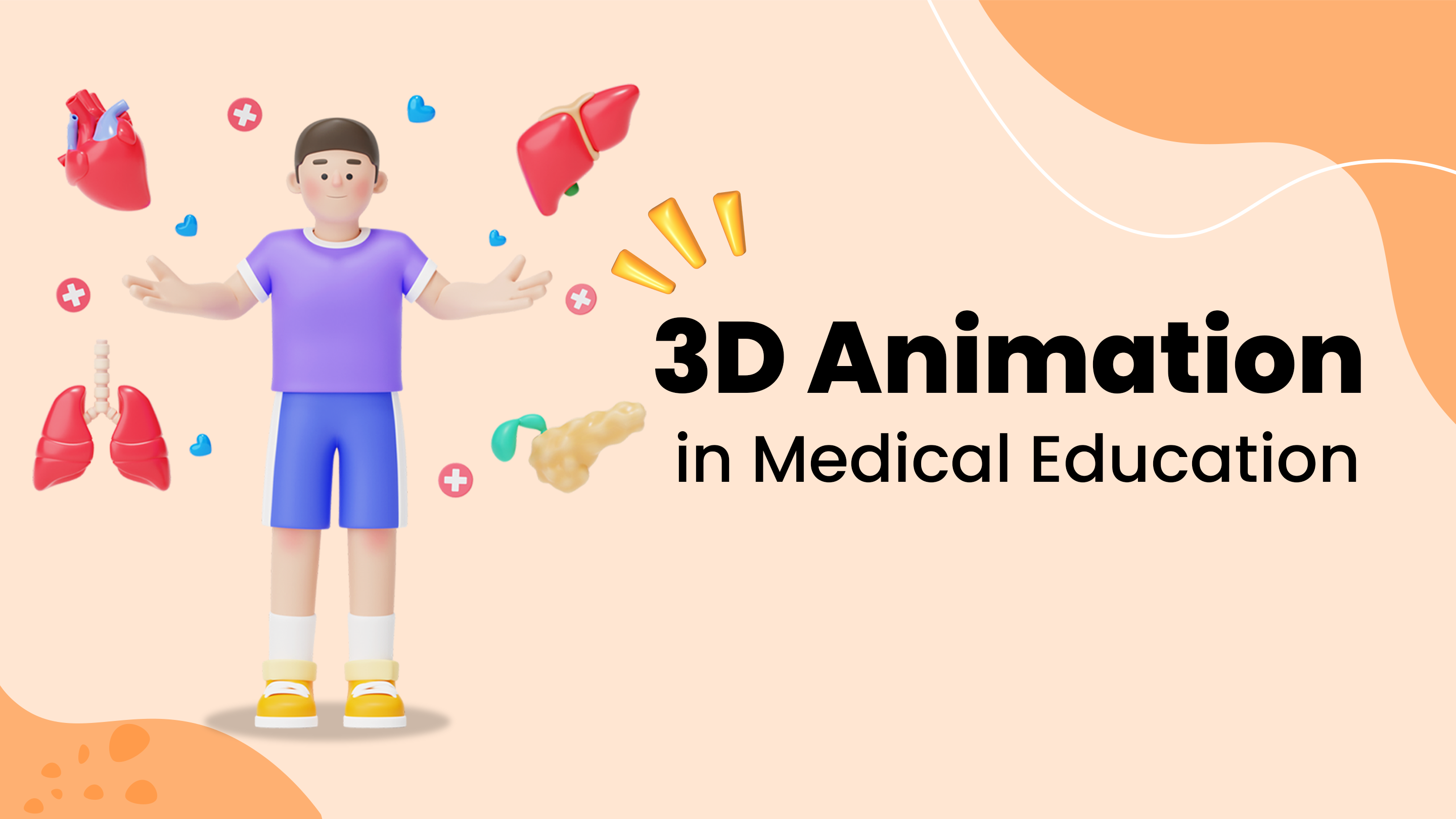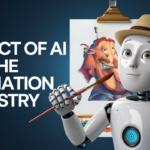In this brand new dynamic world of education, staying ahead in technology is very important. And if we talk about medical education this journey is a challenging one. It is filled with complex terminologies, various anatomical structures, and the need to understand medical procedures correctly.
If we talk about the traditional methods students used to rely on heavy big books, stressful lectures, and yes 2D diagrams to understand the concepts. These methods eventually fell short of giving a comprehensive understanding of the human body and the various medical practices.
This is where 3D animation works. 3D animation in medical education revolutionizes the way medical students study and learn the various intricate concepts of medical education.
The Power of 3D Animation

Traditional methods: Textbooks and static photos can make it difficult for college students to visualize the complexities of the human body or surgical procedures. Difficulty in Visualization: Textbooks and 2D diagrams can make it challenging for students to form a clear intellectual image of the complicated three-dimensional buildings within the human body. Visualizing spatial relationships can be cumbersome.
Lack of Interactivity: Traditional strategies provide confined interactivity. Students are passive recipients of information, making it hard to engage deeply with the issue.
3D Animation: It brings clinical schooling to life by imparting dynamic, visual, and interactive experiences. It allows students to delve deep into the problem matter, gaining a profound understanding of anatomical structures, surgical techniques, and disorder processes. The use of medical study increases students’ interests and keeps them intrigued about this complex subject.
Advantages of Using 3D Animation
3D animation for medical education is a game-changer for several reasons. Below are some benefits of animation in the study:
Dynamic Learning Experience: Unlike static images, 3D animations provide dynamic, immersive, and interactive experiences. They enable college students to discover anatomical structures, surgical procedures, and ailment procedures in vivid detail. It’s as if the subjects come to existence properly earlier than their eyes.
In-Depth Understanding: 3D animations allow students to delve deep into the issue, gaining a profound grasp of complex concepts. They can rotate, zoom in, and dissect digital models, exploring every nook and cranny.
Engagement and Retention: The interactive nature of 3D animations makes studying more engaging. Students are actively involved, which leads to higher retention of information. Concepts become memorable as they are experienced, not just read.
Applications of 3D Animation in Medical Education:

Anatomy and Physiology: Explore the Human Body in Intricate Detail
Traditional techniques of studying anatomy and physiology involve static diagrams and textbooks, which can make it difficult to draw close to the 3-dimensional complexities of the human body.
On the other hand 3D animation takes learning to a completely new level. It lets students discover the human physique from every angle, dissect digital cadavers, and visualize anatomical buildings with exceptional clarity.
This dynamic approach to gaining knowledge aids in a deeper understanding of the human body’s intricacies.
Surgery Simulations: Practice Surgical Techniques in a Risk-Free Environment
3D animation also has a remarkable application in medical education which is surgical simulation. Students who are practicing can now train in a risk-free environment on virtual patients.
This not only provides an immersive experience but also allows them to understand the various surgical procedures, improve their skills, and learn from their mistakes. This increases patients’ safety as well as gives us better-trained future surgeons.
Disease Pathology: Visualize Disease Progression and Diagnosis
In medicine, it is very crucial to understand the progression and pathology of disease. 3D animations help in simplifying this complexity. Students can now visualize disease processes at both the cellular and molecular levels.
These visuals help the students to recognize the entire mechanisms behind the diseases. Bridging the hole between practice and theory 3D animation makes it more enticing and effective.
Pharmacology: Understand Drug Mechanisms and Interactions
Pharmacology is another challenging area in medical education. 3D animation eases the comprehension of drug mechanisms and interactions. Students can learn through watching animations that easily illustrate how these drugs interact with receptors, enzymes, and cellular pathways.
This visual representation enhances their grasp of pharmacological concepts when prescribing medicines in real-life scenarios. And this Eventually aids in better decision-making.
Future Trends and Innovations in 3D Animation for Medical Education
As the panorama of scientific training continues to evolve, so does the role of 3D animation. This powerful academic device has already validated its worth in reworking the way college students research complex medical concepts. Students are relying on 3D animation to study the medical sciences as it seems much easier and more effective. However, the future holds even more thrilling probabilities for 3D animation in clinical education such as:
– Artificial Intelligence (AI) Integration: AI-driven animations can supply personalized getting-to-know experiences.
– Virtual Reality (VR) and Augmented Reality (AR): Immersive applied sciences will in addition beautify clinical education.
– Gamification: Game elements in animations can make gaining knowledge even more engaging.
Conclusion,
The applications of 3D animation in clinical education are diverse and transformative. From exploring the intricacies of the human body to practicing surgical techniques, visualizing ailment progression, and simplifying pharmacology, 3D animation is a versatile tool that enriches the mastering ride for college students and enhances patient care.
As science continues to advance, we can expect even extra revolutionary uses of 3D animation in Medical Education, further revolutionizing the way healthcare experts are trained and how they deliver care to patients. Students are now opting for animation for learning as it is less complicated. Embracing this dynamic instructional tool is without doubt a step in the right direction toward a brighter and greater informed future in healthcare.




